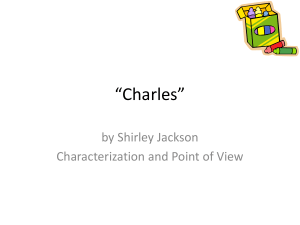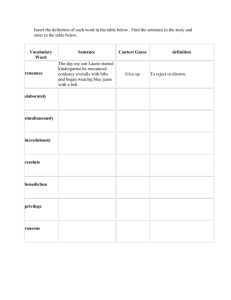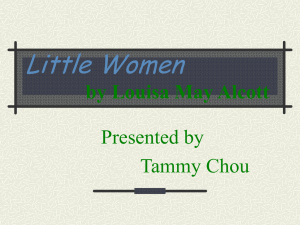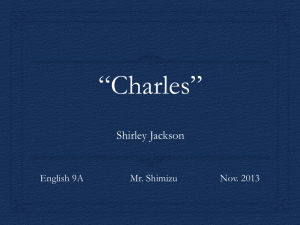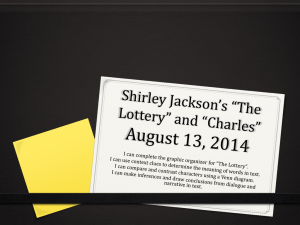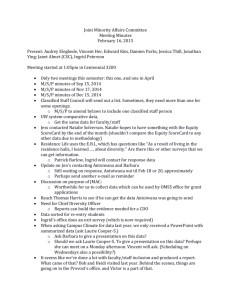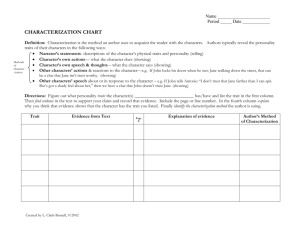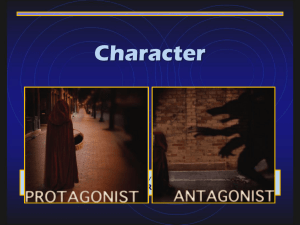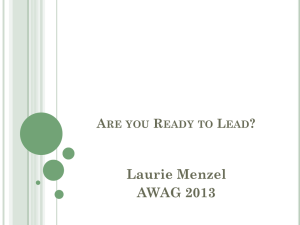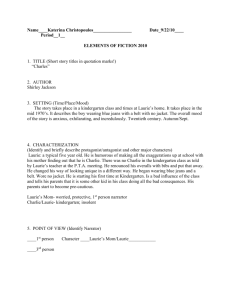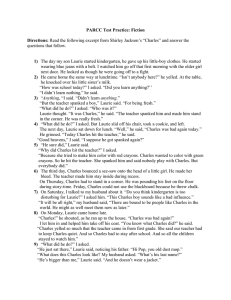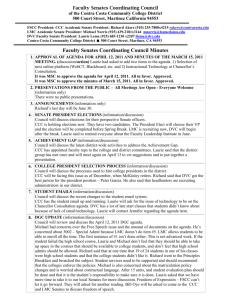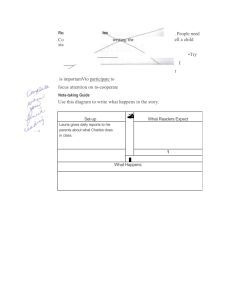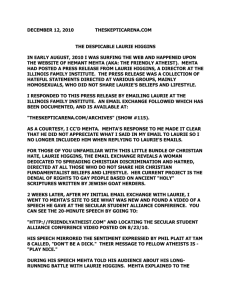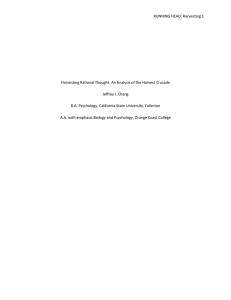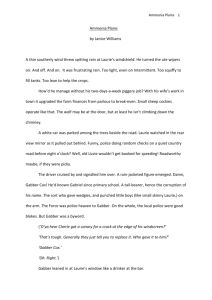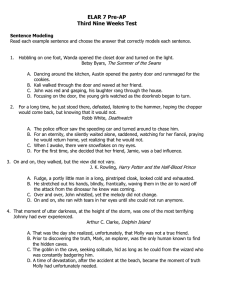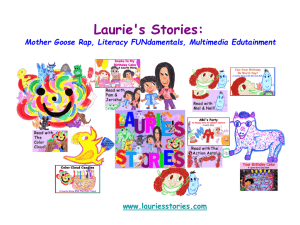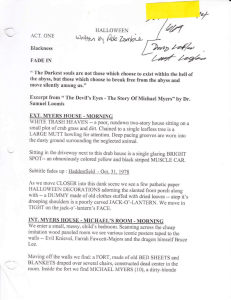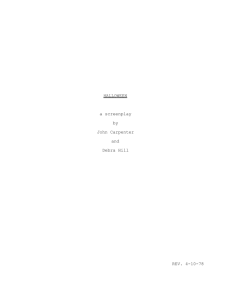Characterization essay.doc
advertisement
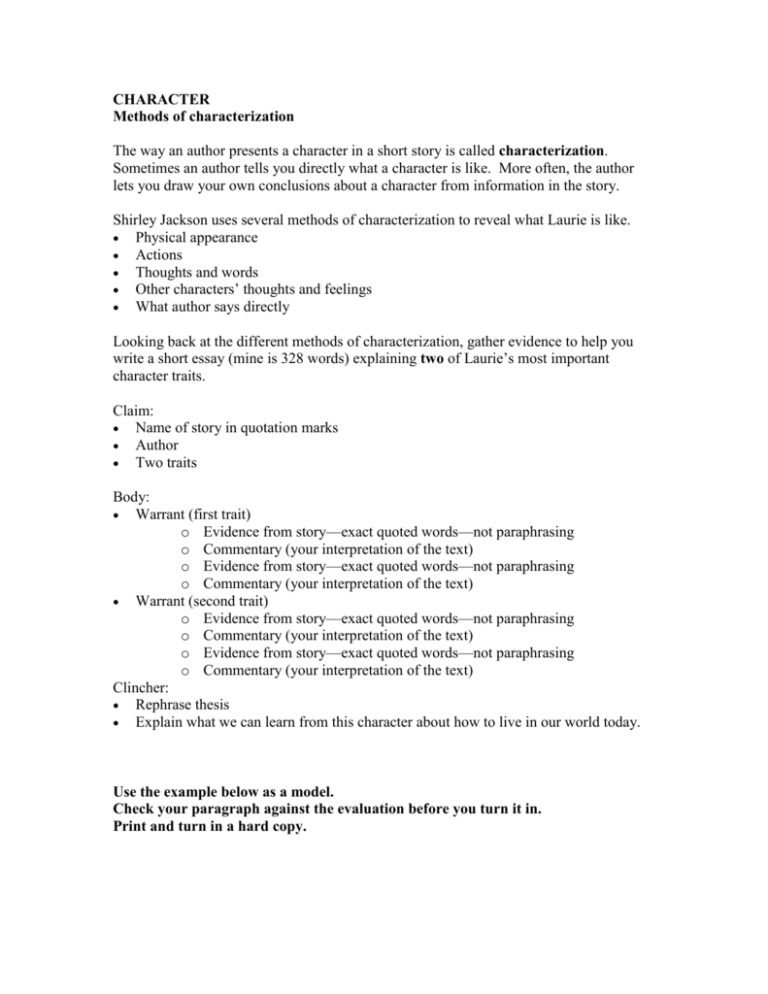
CHARACTER Methods of characterization The way an author presents a character in a short story is called characterization. Sometimes an author tells you directly what a character is like. More often, the author lets you draw your own conclusions about a character from information in the story. Shirley Jackson uses several methods of characterization to reveal what Laurie is like. Physical appearance Actions Thoughts and words Other characters’ thoughts and feelings What author says directly Looking back at the different methods of characterization, gather evidence to help you write a short essay (mine is 328 words) explaining two of Laurie’s most important character traits. Claim: Name of story in quotation marks Author Two traits Body: Warrant (first trait) o Evidence from story—exact quoted words—not paraphrasing o Commentary (your interpretation of the text) o Evidence from story—exact quoted words—not paraphrasing o Commentary (your interpretation of the text) Warrant (second trait) o Evidence from story—exact quoted words—not paraphrasing o Commentary (your interpretation of the text) o Evidence from story—exact quoted words—not paraphrasing o Commentary (your interpretation of the text) Clincher: Rephrase thesis Explain what we can learn from this character about how to live in our world today. Use the example below as a model. Check your paragraph against the evaluation before you turn it in. Print and turn in a hard copy. In the short story “Charles” by Shirley Jackson, two of Laurie’s mother’s most important character traits are cluelessness and superiority. She shows her cluelessness through her thoughts and words every time she refuses to see what the reader knows all along—that Charles doesn’t exist and that her son Laurie really is Charles. She says to her husband, “…this Charles boy sounds like such a bad influence,” not wanting to face the fact that her child could be this naughty. Though she hears, she doesn’t listen to his teacher when she says, “We had a had a little trouble adjusting, the first week or so, but he’s now he’s a fine little helper. With occasional lapses, of course.” At that point, things should have been clicking for Laurie’s mother, but she refuses to face facts. Laurie’s mother shows another trait, superiority, in not wanting to believe “Charles” is really her son. Once again the author uses indirect methods of characterization through the mother’s actions. She can’t wait to meet Charles’s mother. Talking about the PTA meeting, she says to her husband, “If only she’s there,” meaning she can’t wait to see the woman who could raise such an awful child. Once she’s at the meeting, Laurie’s mother “sat restlessly…scanning each comfortable matronly face” and couldn’t believe it when “No one stood up in the meeting and apologized for the way her son had been acting.” The mother’s superior attitude wants to see the worst in someone else, even though she would never want it for herself. Because of her two most noticeable traits, cluelessness and superiority, Laurie’s mother probably would not be as brave to own up to the truth as the teacher did in “I Confess.” Instead, she probably slunk out of the building without making eye contact with anyone. Something we can take from this character is not to shield our eyes from the obvious, and to face things head-on, even if they might be hurtful.
